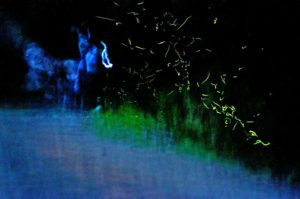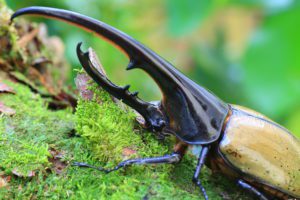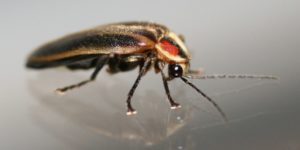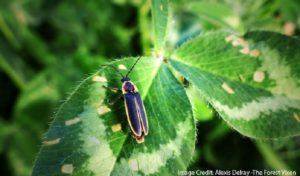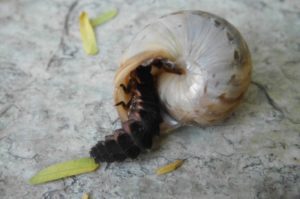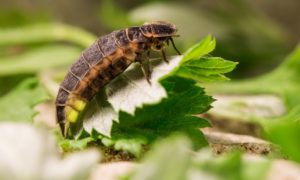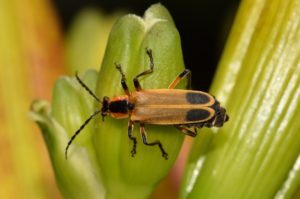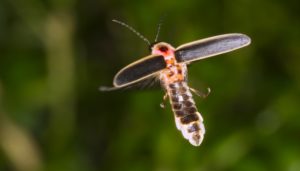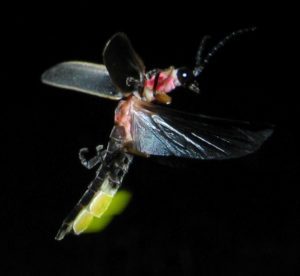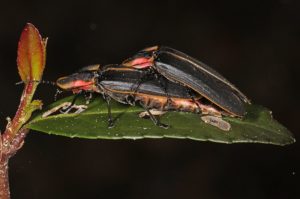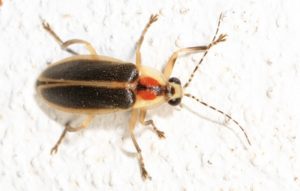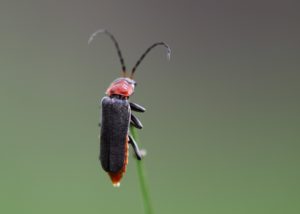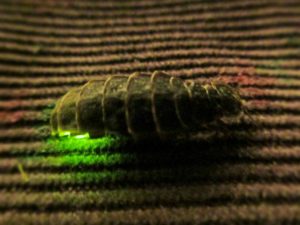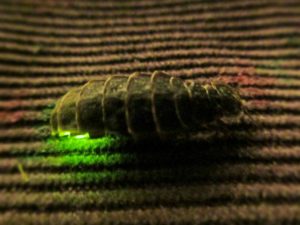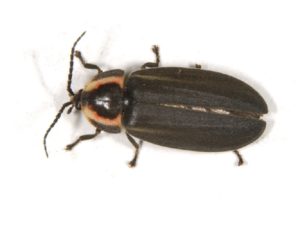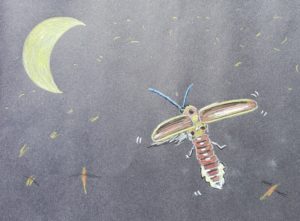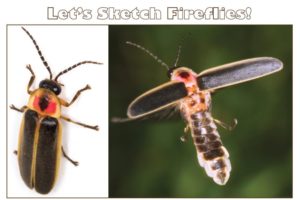World Firefly Day is celebrated on the 4th of July to spotlight nature’s original firework displays!
In their honor, I’ll share interesting facts about their biology, habitats, lifecycles, and of course, how and why fireflies glow! Lastly, I’ll share my step-by-step demonstration of how to sketch a firefly. So, let’s dive in!
Fast and Fun Facts About Fireflies
- Fireflies aren’t flies and lightning bugs aren’t bugs; all belong to one family of bioluminescent beetles.
- Firefly ancestors go back as far as 150 million years, sharing the planet with the dinosaurs.
- As their name suggests, fireflies are distinguished by having a light-producing organ called a lantern which produces their characteristic bioluminescent glow and which, unique in all the animal kingdom, they can control like a light switch.
- All species of fireflies have a larval stage that glows, but not all adults are capable of the same feat.
- A few other families of beetles can glow besides fireflies, as can some fungus gnats as well as a variety of marine sea creatures.
- Revered for thousands of years in many cultures, fireflies have played a prominent role in folklore and art.
- They were once harvested by the millions for the chemical substance responsible for their ability to glow.
- Each firefly has a courtship display that is unique to its species.
- Fireflies can protect themselves from predators by spontaneously releasing both noxious odors and a sticky blood at will, bathing the hapless beast in a smelly bloodbath!
- Some fireflies are threatened with extinction and many others are declining worldwide due to human activities.
Fond Childhood Memories
If you grew up in firefly country, as I did on the prairies of Nebraska, you are likely to be deeply nostalgic when fireflies are mentioned in conversation. At summer camp, my friends and I would capture them in Mason Jars, to keep us company on our bed stands as we drifted off to sleep serenaded by the sounds of chirping crickets and croaking frogs.
As Tufts University researcher Sara Lewis recounts in her book, Silent Sparks, “fireflies create a magic that transcends times and space. Their resplendent displays change ordinary landscapes into places ethereal and otherworldly. Fireflies can transform a mountainside into a living cascade of light, a suburban lawn into a shimmering portal to another universe, a serene mangrove-lined river into a hypnotically pulsating disco.”
Cultural Connections
Imagine what our ancient ancestors must have thought of fireflies; the creature’s glowing embers dancing in midsummer evenings. Did we believe they had mystical, supernatural powers? Over the millennia, humans have used fireflies’ bioluminescent glow as nocturnal body paints and as lanterns to illuminate a cave or cabin or a forest path during a nocturnal stroll.
A Firefly By Any Other Name
Fireflies are known by a wide variety of endearing names including lightning bugs, forest stars, glow flies, golden sparklers, fire devils, candle flies, moon bugs, big dippers, blinkies, and flying embers.
Fireflies are a Type of Beetle
All fireflies are members of the order of insects known as beetles, and thus are related to familiar fauna like ladybugs, mealworms, weevils, rhinoceros beetles, dung beetles, and scarab beetles to name just a few.
The beetles truly rule the animal kingdom, being at least 400,000 species strong, which represents roughly 25% of all living animal species on earth! Members of the beetle order, Coleoptera, are easily recognized by their pair of hardened wing sheaths and the triangular scutellum at their junction.
All in the Family
All fireflies are members of the Lampyridae family of beetles. Approximately 2,200 species of fireflies have been discovered and named to date worldwide, with around 125 residing in North America, mostly in the southeastern United States.
The Firefly Body Plan
Fireflies are typically clad in a trio of yellow, red, and black colors – a globally recognized combination sported by species around the world from unpalatable monarch butterflies to deadly coral snakes, serving to warn would-be predators of the toxic properties of their flesh. Like dart-poison frogs and other brightly colored critters, their toxicity is due to their diet; cholesterols ingested from their prey are chemically rearranged into potent poisons.
In an interesting twist of mimicry, many insects have evolved to superficially resemble the coloration and shape of the distasteful firefly including cockroaches and long-horned beetles, in hopes of fooling predators, a phenomenon known as Batesian Mimicry. Thus, one might say that imitation is the sincerest form of flattery!
The first section of a fireflies’ body is the head that bears the eyes and antennae; males are endowed with larger ones of each, the better to detect the presence of their fertile female partners! The mouthparts are reduced in the adult since their focus is on mating and not eating.
The middle section of the body; the thorax or pronotum, is large and shield-like, partially obscuring their heads, which makes them superficially resemble cockroaches, to whom they are not closely related. The thorax bears the 3 pairs of legs and the two pairs of wings.
Compared to many other families of beetles, they are relatively soft-bodied, including having softer, more leathery elytra, or wing covers than their beetle brethren. Females of many species are wingless, looking a bit more like the grub-like larval stage, while others have wings though rarely using them, preferring to wait motionless on blades of grass as males fly by, courting their attention.
The last section of the firefly body, the abdomen, primarily contains the reproductive organs and the lantern which, when present, is larger in the male whose light must shine more brightly in the course of performing his courtship dance.
Where Fireflies Live
Fireflies reside across the globe from Sweden, Alaska, and Russia in the north to Tierra del Fuego, Australia, and South Africa to the south. As with many lifeforms, tropical rainforests host the most species, with the highest diversity in tropical Asia and South America. Brazil alone has upwards of 350 species.
In North America, we have around 125 species with diversity being highest in the southeastern states like Georgia and Florida. Fireflies tend to live in habitats that are warm, moist, and easy to fly above such as stream edges, grasslands, marshes, meadows, and open woodlands.
Lifecycle of Fireflies
A fireflies’ life begins when eggs, gently laid by the adult female several weeks earlier in moist moss on a summer’s eve, hatch into 6-legged grub-like larvae. Depending upon the species, larvae live 1 month to 2 years underground and in leaf litter, though some Asian species are aquatic.
During this time, they are feeding voraciously on the likes of unlucky snails, slugs, and earthworms. Their prey is rendered helpless by the fireflies’ neurotoxins and digestive enzymes injected with sharp jaws, thus paralyzing and liquifying the prey into a nutritious soup!
All species of firefly larvae are bioluminescent; their glow being emitted from a pair of spots at the tip of their abdomens. The ability to glow evolved early in the evolution of this family of beetles thought to serve as a signal, like an illuminated traffic stoplight, to warn would-be predators such as birds, amphibians, and rodents of their distastefulness. Scientists believe that only millions of years later was the ability to glow used by the adult life stage in courtship displays.
After growing big and strong, the firefly larvae continue on to a brief pupal stage, similar to that found in butterflies, in which their innards are drastically rearranged from a crawling worm-like creature to a winged flying insect.
After several weeks, the pupae hatch into adults, whose only purpose is to seek out a mate in hopes of perpetuating the species. Their digestive systems are now largely replaced by reproductive structures; for sex, not food, is their primary drive during their brief month-longish adult stage.
Once adults have paired up and mated, the females having laid their eggs and the males having used up their sperm and exhausted their energy supplies, the adults will perish one by one, their nutrients cycled back into the food web.
Firefly Courtship and Mating
Courtship rituals come in several flavors depending upon whether the firefly is a nocturnal flasher or a day-active scent-seeker. When folks imagine fireflies, it is the luminous ones with flashing lanterns we think of first, so we’ll focus on those.
During the summer, when nights are warm enough for flight, male fireflies will take to the skies from dusk to midnight depending upon the species. Females perch on grass blades, as if they are girls on barstools, waiting with coy anticipation, for the light show to begin.
Males fly about flashing a unique calling-card for their species while females observe their antics, perched quietly on vegetation. Females decide which male they like based on such factors as flash duration which research has shown might be a predictor of how much protein he carries in his sperm package – a nuptial gift as it were, bestowed by some species, to fortify the female’s eggs he hopes to father.
Females are known to be quite picky! If she fancies a certain suitor, she will return a species-specific flash to let him know he can come calling.
Once a male detects a female and she has deemed him worthy, mating ensues, their embrace lasting upwards of several hours, though the male may need to fend off a plethora of competing suitors in the meantime.
Firefly Prey; What’s on the Menu?
Larval fireflies are well-suited for their voracious habits of eating earthworms, snails, and slugs. Their large, piercing mandibles inject digesting enzymes into their prey then the firefly slurps up the partially digested body; a practice they share with many spider species. Many species of adult fireflies eat nothing at all, using up their energy stores from their grub stage, while others may occasionally nibble on meals of pollen, nectar, and small insects.
Firefly Predators
Both larval and adult fireflies possess a potent chemical that deters most predators, including those that normally have a voracious appetite for insects, like amphibians, reptiles, birds, bats, and rodents. They manufacture defensive toxic steroids that are chemically similar to those found in toads and synthesized from the cholesterol that they obtain in their larval diet. A few predators have successfully circumvented the fireflies’ defenses, including wolf spiders, harvestmen, and assassin bugs.
Those fireflies that do fall victim to assailants have a number of defense strategies up their sleeves including producing a noxious odor and releasing a sticky mass of gluey blood. Now those are nifty tricks!
Firefly Femme Fatales!
Though most adult fireflies have lost their ability to eat in favor of putting all their energy into reproduction, there are some grisly exceptions. For example, in North America, there are species within the Photuris genus whose females have taken to dining on male fireflies of other species. Yes, it’s true. They lure an unsuspecting male by mimicking the come-hither flash pattern of that species’ females, then when the male lands in hopes of a romantic interlude, he instead becomes a midnight snack for the Photuris female. She dines on her neighbor, not for the calories, but to sequester the toxins in his flesh which serve to protect her from predators since for unknown reasons, her species lacks.
Bioluminescence Isn’t Just for Fireflies
In the animal kingdom, the ability to glow is thought to have evolved independently at least 30 times, mostly in deep-sea animals, as well as in some protozoans, bacteria, and fungi. Only a few other families of beetles can glow, including some click beetles and giant glow-worm beetles.
Fireflies are among the few organisms that can not only glow but can control it by precisely timing their flashes to be used as communication.
CLICK HERE to read about another type of fascinating bioluminescent creature, marine plankton that is responsible for a phenomenon known as sea sparkle.
How Fireflies Glow
The larval/grub stage of nearly all species of fireflies can glow, but not all adults can. Some species, aptly known as ‘dark fireflies’, find their mates not by glowing, but by scent. Females produce airborne perfumes, known as pheromones, that are detected by males with the aid of their large and sensitive antennae.
The glowing flashlight, controlled by a chemical light switch, is located at the tip of the abdomen in the structure known as the lantern and has a slightly different structure depending upon whether it’s on a firefly larva, adult male or adult female beetle.
A firefly’s glow is created by oxidation of luciferin which is produced in cells with rich oxygen supply. The beetle can control the timing and duration of flashing by controlling the oxygen. When air is added, the luciferin, in the presence of an enzyme called luciferase, is almost instantly oxidized, releasing the energy as light. Nearly 100% of the energy is emitted as cold light. That’s quite a feat in comparison to your home’s lightbulbs which emit most of their energy as heat; an all too familiar fact if you’ve ever burned your finger on a hot bulb!
Many species of fireflies can glow in patterns blinked out at an individual’s own choosing in a Morse code species-specific courtship display. Others, like the Blue Ghost Firefly, Phausis reticulata, in Tennessee, emit a weak but steady glow, while still other species’ males blink in unison with synchronous flashes of light, such as Photinus carolinus, also found in Tennessee, and Pteroptyx tener in Malaysia. Colors of their lanterns depend upon species, being yellow, orange, red, or green.
Spotlight on Interesting Species
The American Big Dipper Firefly
This species, Photinus pyralis, is named for the male’s courtship display in which they appear to sky write J-shaped flashes that remind some folks of the Big Dipper constellation. They are found throughout the eastern United States inhabiting lawns, golf courses, and parks. Big Dipper Fireflies are familiar to generations of children since they’re active at dusk and fly low to the ground.
The Common European Glow-worm Firefly
This species, Lampyris noctiluca, as its name suggests, is common throughout Europe as well as northern Asia. Glow-worm fireflies is a common name given to those whose females produce a prolonged steady glow – usually at dusk around the summer solstice, as she clings to some vegetation to attract a flying male, who typically doesn’t glow. Her light is bright; visible to the human eye over 100 feet away!
The Dark Fireflies Group
This group of species, including the most common one on the east coast of North America, Ellychnia corrusca, are called ‘dark fireflies’ since the adults can’t glow. The adults of these fireflies lack a lantern and rely not on a luminous glow to find each other but on chemical scents produced by the females and perceived by the males who sniff out the wind-borne perfumes with their large and sensitive antennae. Compared to the glowing nocturnal species, this group is diurnal, or active during daytime hours.
The Ellychnia genus of fireflies is widely distributed throughout North America, while the Lucidota group of species are east of the Rockies. The males and females are more similar in shape to each other compared to glowing fireflies.
Why Are Fireflies Disappearing?
Have you ever said to yourself “I remember catching fireflies when I was a kid, but I never see them anymore”? I have. Here are some reasons why they don’t light up the night anymore.
- Habitat Loss
- Deforestation
- Climate Change
- Pesticides
- Light pollution
- Collecting
How to Help Fireflies
As you’ve learned from the facts above, the lights of fireflies are rapidly dimming across the globe. If you live in an area that hosts these silent sparklers, here are some things you can do to make your yard and neighborhood safer and more attractive to our glowing friends.
- Avoid pesticides that kill fireflies and their prey.
- Leave some leaf litter and longer grass for firefly habitat.
- Reduce outdoor lighting so glowing fireflies can communicate.
Firefly Facts and Sketching Demo
Learn More About Firefly Biology
-World Firefly Day Info on the Fireflyers International Network website
-The loves and lies of fireflies (TED talk)
-Fierce facts about fireflies (article)
-How and why do fireflies light up? (article)
-Why the lights are going out for fireflies (article)
-Fireflies worldwide are at risk of extinction, and humans are to blame (article)
-The eerie glow of blue ghost fireflies (Science Friday story)
-Silent Sparks, The Wondrous World of Fireflies (Book) by Sara Lewis
-The Dark Side to the Firefly’s Flare (NPR story)
-Fireflyers International Network (conservation website)
-Conserving the Jewels of the Night (report)
Learn All About Fireflies and How to Sketch Them!
Register for my online workshop (watch live on July 5th, 2025 or the replay) where you’ll learn how and why fireflies produce their light and other fascinating aspects of their biology. Then I’ll lead you through a step-by-step sketching demonstration where we will draw a pretty firefly together.
CLICK HERE to download your firefly sketching cheat sheet that you can use to follow along to the sketching demonstration in the video.
CLICK HERE to DOWNLOAD CHEATSHEET



